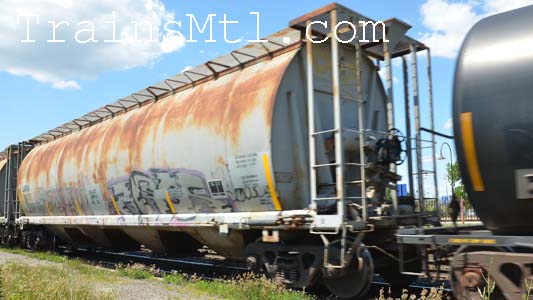
(The hand brake position compare to the train car show us that we are facing the "B" end and that we are looking at the "left" side of the car.)
(La position du frein à main par rapport au wagon nous démontre que nous regardons le bout "B" (B end) du wagon et que nous regadons la "gauche" du wagon.)
Identifying side and end of a train car.
Identifying which side ("left" or "right"), or which end ("A" and "B" end )of railroad cars is sometimes important.
The rule is simple; the end where the handbrake is (looks like a steering wheel) is the "B" end.
The end without the handbrake is then the "A" end.
If the railroad car has two handbrakes, one at each ends of the car, there is supposed to be a stencil that will identify which end is located on the car.
To identify the side, just stand facing the end with the handbrake end (the "B" end) and your right will be the "right" side of the car and your left will be the "left" side of the car.
Comment identifier les cotés et bouts d'un wagon.
Il est, quelquefois, important de pouvoir identifié quelle coté (gauche ou droit) ou quel bout de wagons (" A " end ou " B " end) que l'on fait référence.
La règle est simple, le bout ou le frein à main est (la roue qui ressemble à un volant d'auto) est le bout " B " (" B " end) du wagon.
Donc, le bout sans frein à main est le bout " A " (" A " end)
Si le wagon possède deux freins à main (un à chaque bout), une indication sur stencil qui identifie quel bout devra être indiquée.
Pour savoir quel sont les coté du wagon, la règle est simple; faisant face au bout " B " du wagon, votre gauche est " la gauche " du wagon et naturellement, le côté droit du wagon est à votre droite.
To go back to the reference page / Pour retourner à la page des références
To go back to the menu page / Pour retourner à la page du menu